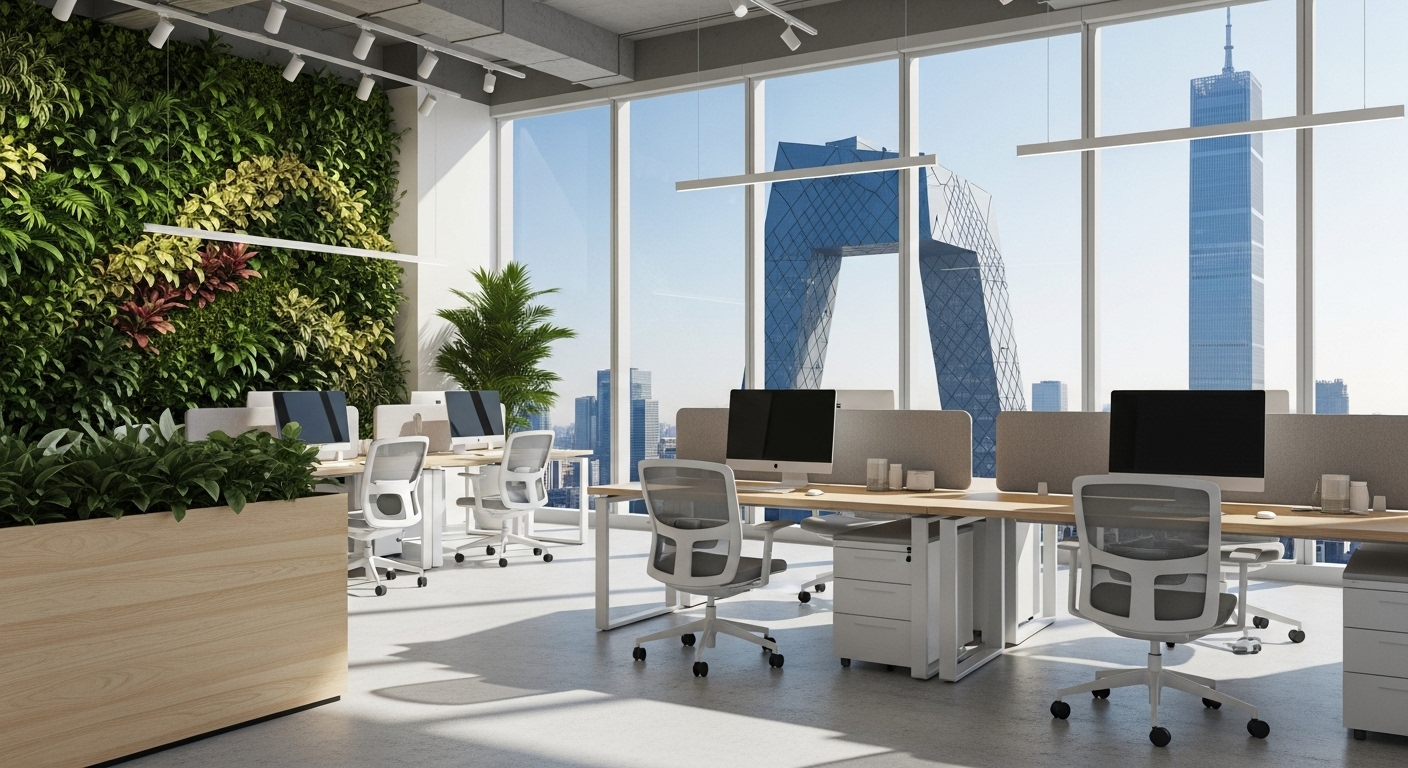Choosing a workspace in today’s dynamic business environment feels more complex than ever. The rise of hybrid models, the fierce competition for talent, and fluctuating economic conditions have transformed a simple real estate decision into a critical strategic challenge. Many leaders jump straight to viewing properties, getting lost in a sea of floor plans and lease terms without a clear direction. This often leads to a space that doesn’t truly fit their needs, resulting in unforeseen costs, cultural misalignment, or operational friction. To avoid these pitfalls, you need an internal roadmap before you ever start the external search. Introducing the ‘Workspace Compass’—a foundational framework designed to help you navigate this crucial decision. This guide will provide a step-by-step process to define your unique requirements across six critical dimensions, ensuring your final choice is not just a location, but a strategic asset that fuels your growth, supports your culture, and empowers your team.
Financial True North: Defining Your Budget and Uncovering Hidden Costs
The most common starting point for any office search is the budget, but too often, businesses only consider the monthly rent. This is a critical oversight. The ‘Financial True North’ of your compass requires you to calculate the Total Cost of Occupancy (TCO), a comprehensive figure that reveals the true financial commitment. Beyond the base rent, you must account for a range of often-hidden expenses. These include Common Area Maintenance (CAM) charges, property taxes, and insurance, which can add a significant percentage to your monthly bill. Then there are the one-time capital expenditures. A fit-out, the process of tailoring the raw space to your needs, can be a major investment, covering everything from building walls and installing lighting to painting and flooring. You must also budget for furniture, IT infrastructure setup, and security systems. Don’t forget the operational costs like utilities, janitorial services, and internet connectivity. Finally, consider the end-of-lease costs, such as dilapidation or restoration clauses that require you to return the space to its original condition. By building a detailed TCO model upfront, you create a realistic financial envelope. This prevents you from being swayed by an attractive base rent on a property you ultimately cannot afford and allows you to compare different types of spaces—like a traditional lease versus a serviced office—on a true ‘apples-to-apples’ basis.
Operational East: Aligning Space with Your Business Workflow
An office is fundamentally a tool for work. If the design of that tool doesn’t match the nature of the work being done, productivity will suffer. The ‘Operational East’ on your compass points toward a deep analysis of your team’s daily workflows. Before you look at a single floor plan, map out how your business functions. Does your team thrive on spontaneous collaboration, or do they require deep, uninterrupted focus? Most likely, it’s a mix of both. The key is to design a space that supports these different modes of work. A purely open-plan office can hinder concentration, while a sea of private offices can stifle teamwork. The optimal solution often involves ‘zoning’—creating distinct areas for different activities. This could include quiet zones with individual pods for focused tasks, collaborative hubs with whiteboards and flexible seating for brainstorming, formal meeting rooms for client presentations, and social areas that encourage informal interaction. Consider the flow of traffic between these zones and how teams that frequently interact are positioned relative to one another. Furthermore, evaluate how your physical space will support your hybrid work strategy. Do you have high-quality video conferencing setups in all meeting rooms to ensure remote employees are fully included? Your workspace should be an accelerator for your operations, not a bottleneck.
Cultural West: Reflecting Your Brand and Values in Your Environment
Your workspace is one of the most powerful, tangible expressions of your company culture and brand identity. It sends a constant message to your employees, clients, and partners. The ‘Cultural West’ of your compass guides you to choose a space that tells the right story. A scrappy tech startup might feel perfectly at home in a vibrant, industrial-style coworking space, while a high-end financial consultancy will likely require a more polished and professional environment in a prestigious building to build client trust. The location itself is part of this narrative. Is it important for your brand to be in a cutting-edge innovation district, a traditional financial center, or a creative, artsy neighborhood? The design and feel of the building, from the lobby to the elevators, contributes to the overall impression. Think about how the interior can be customized to reflect your values. Are you a company that values transparency? Perhaps a design with plenty of glass and open sightlines is appropriate. Do you prioritize wellness? Look for spaces with ample natural light and access to green areas. Your office is more than just walls and desks; it’s a physical embodiment of your answer to the question, ‘Who are we as a company?’ Making a choice that is culturally misaligned can create a disconnect for employees and confuse clients.
Talent South: Designing for Your People’s Needs and Well-being
In the modern economy, the war for talent is fierce, and a thoughtful workspace can be a significant competitive advantage. The ‘Talent South’ on your compass directs your attention to the most important asset you have: your people. What do they need to be happy, healthy, and productive? The first consideration is the commute. A location that is difficult to access or far from major transport links can be a major deterrent for both current and prospective employees. Analyze where your team lives and look for a central point that minimizes travel time for the majority. Beyond the commute, consider the local amenities. Easy access to coffee shops, healthy lunch options, gyms, and childcare can dramatically improve your team’s work-life balance and overall satisfaction. Inside the office, prioritize elements that contribute to well-being. Abundant natural light, good air quality, and ergonomic furniture are no longer perks; they are essentials. Providing a variety of spaces caters to neurodiversity and different work styles, allowing employees to choose the environment that best suits their task and mood. By putting your employees’ needs at the center of your decision-making process, you create a ‘magnet’ workplace—a destination where people genuinely want to be, fostering loyalty and making it easier to attract top-tier talent.
The Flexibility Axis: Planning for Scalability and Future Growth
The business world is unpredictable. A workspace decision locks in capital and commits your company to a path for several years, so it’s crucial to build in flexibility. The ‘Flexibility Axis’ of your compass isn’t a single direction but a dynamic element that forces you to consider the future. How quickly do you anticipate your team will grow? Signing a ten-year lease on a space that you’ll outgrow in two years is a costly mistake. Conversely, paying for excessive empty space can drain your resources. This is where you must carefully weigh the pros and cons of different real estate models. A traditional lease offers stability and control over your environment but comes with long-term commitment and high upfront costs. Flexible workspaces, such as serviced offices or coworking memberships, offer shorter terms and the ability to scale your desk count up or down on a monthly basis, providing an agile solution for fast-growing or uncertain businesses. Some companies are adopting a hybrid or ‘hub-and-spoke’ model, maintaining a smaller central HQ for collaboration while providing employees with access to a network of flexible spaces closer to their homes. The right choice depends on your growth trajectory, risk tolerance, and industry. The key is to avoid making a decision that is perfectly sized for today but completely wrong for tomorrow.
The Infrastructure Core: Evaluating Tech, Security, and Logistics
At the very center of your Workspace Compass is the ‘Infrastructure Core’—the non-negotiable technical and logistical foundation upon which your entire operation rests. A beautiful, well-located office is useless if the internet is unreliable or the power goes out. Your due diligence here must be meticulous. Start with connectivity. Does the building offer fiber-optic internet from multiple providers? This redundancy is critical to avoid downtime. What is the quality of the building’s cellular reception? Next, evaluate the power and HVAC systems. Are they modern and well-maintained? Is there a backup generator? Security is another crucial element. Assess the building’s access control systems, surveillance cameras, and on-site security personnel. Will your team have 24/7 access if needed? Consider the physical logistics as well. Are there adequate loading docks and freight elevators for moving equipment or receiving large deliveries? What about parking for employees and clients? These infrastructural elements may not be as exciting as design or culture, but a failure in any one of them can bring your business to a grinding halt. Never assume these fundamentals are in place; verify everything and ensure the building’s infrastructure can meet and exceed your operational demands now and in the foreseeable future.
Ultimately, the process of choosing your space is a journey of introspection. Before you can find the right answer in the market, you must first ask the right questions internally. The Workspace Compass provides a structured framework for this essential self-assessment. By methodically working through each point—from the hard numbers of your Financial True North to the human-centric needs of your Talent South—you build a comprehensive and detailed brief. This brief becomes your most powerful tool. It transforms your search from a vague exploration into a targeted mission. It allows you to quickly disqualify unsuitable options and confidently evaluate potential contenders against a clear set of criteria. You move from being a reactive buyer, swayed by a landlord’s pitch, to a strategic leader making an informed decision. The final choice will be more than just a lease agreement; it will be a deliberate investment in your company’s future, a space perfectly aligned with your budget, operations, culture, and growth ambitions. With a clear internal compass, you can navigate the complex real estate landscape and find a workspace that truly empowers your business to thrive.





